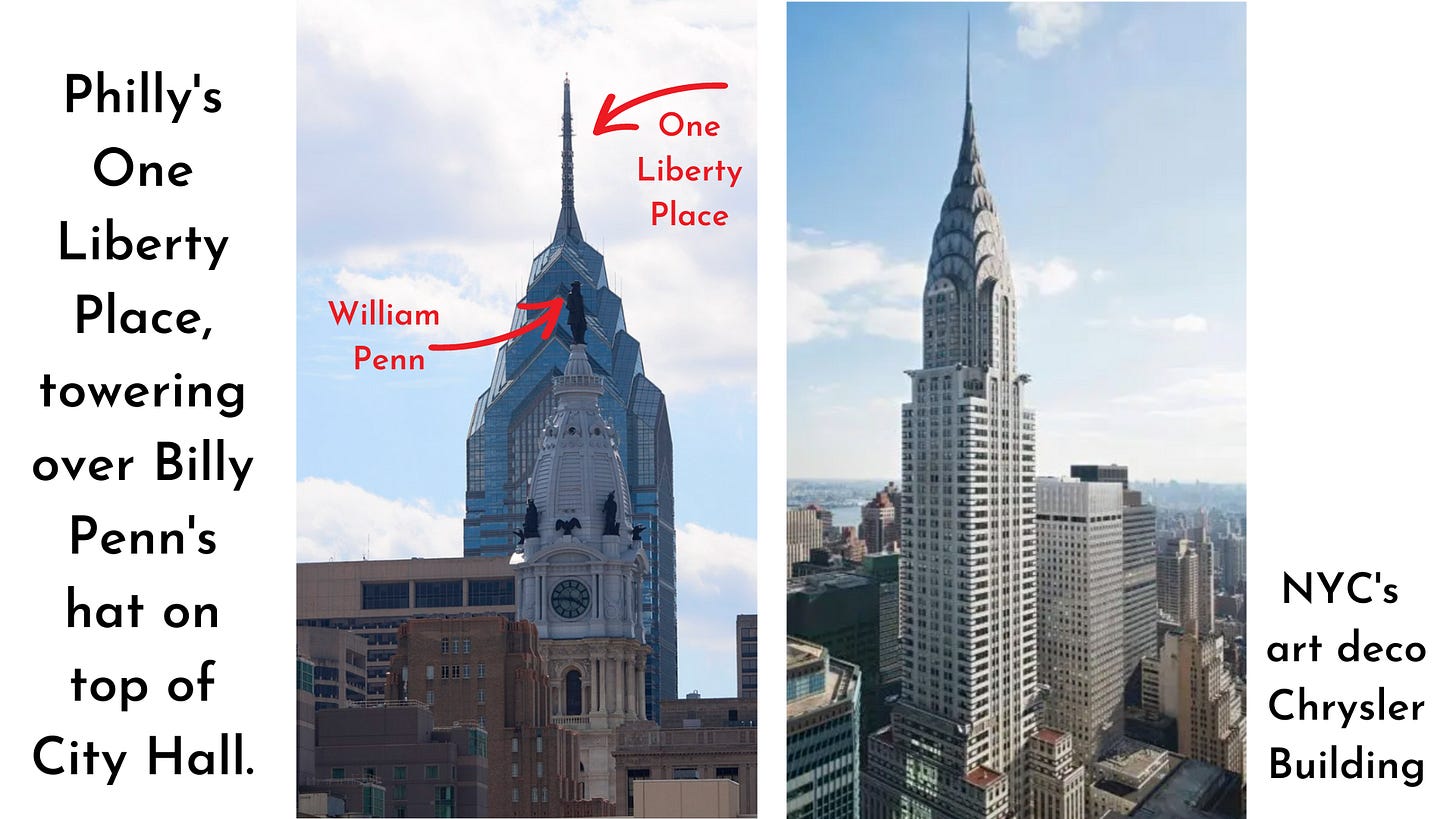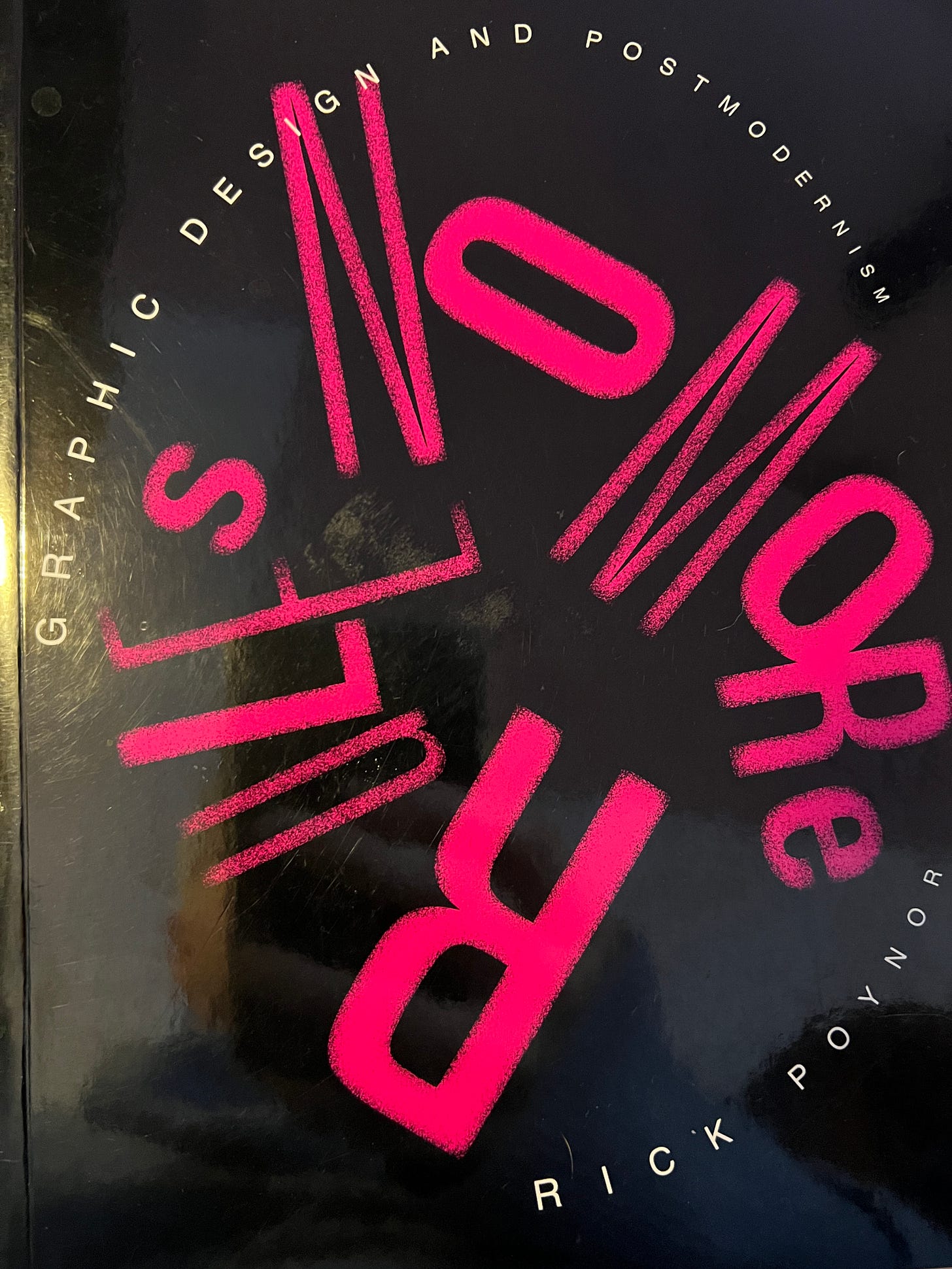Finding the Red Thread in my Mind
from postmodern punks to metamodern meadows to autistic mystics... it's all connected, right?
I’ve been having one of those days (weeks, months…) where I have too many interesting things going on and whenever I sit down to focus on this thing I immediately feel like I should be focusing on that thing until I’m just flitting from thing to thing to thing and I inevitably become immobilized and can’t seem to focus on anything at all.
Whew!
Can you relate?
Just to be clear, this is a spinny feeling, not a spirally one.
Spirally makes me feel lovely and expansive and connected to everything all at once.
Spinny just makes me feel sick.
This spinniness seems to happen especially on the weekend, when I feel like I should be resting, or at least not working. I should be enjoying myself, dammit!
There are two issues here, as far as I can see:
One is should. Should is always a red flag (duly noted, but that’s not the topic for today).
The other is that this spinny dilemma, especially on the weekends, seems to be the result of the embarrassment of riches that is my work: I have so many interesting projects going on (I know: boo hoo), and also: my work is basically everything I love (again: boo hoo, ik ik … but tell that too my brain!).
Another way of saying this is that everything I love eventually becomes connected to my work. It’s hard for me to have a hobby, or something I do just to relax … because everything is connected. That’s just how my mind works. It just connects everything up whether I like it or not.
One of my favorite interior designers, Kate Watson-Smythe,1 talks about having a red thread that creates "a common theme in your interior design and, from there ... a cohesive look" (and red threads are better than red flags, no?). As Kate explains, the idea of a red thread is not new: “Theseus followed a red thread given to him by Ariadne to find his way out of the Minotaur’s cave in Greek mythology, and it has been used in various ways ever since.”
The red thread as an interior design concept is probably a good topic for another post, but today I want to talk about the red thread in my brain, because right now it looks something like this:
But I have this idea that if I could ask you to indulge me in sharing some of what’s spinning around in my mind with you, I think maybe I could begin to untangle it.
And maybe even stop spinning.
So here goes:
If that is too long of a wind-up before I get to the actual damn point, you can just start here.
I think the easiest thing is to do a sort of a round-up of stuff I’m reading and thinking about lately:
Postmodern Punks Stirring Things Up
Over on The Spiral Lab, Jesse, Gray and I are having big fun making videos and a podcast about art and interior design, and especially where it connects with disability justice. But really, I’m just an interior design enthusiast—like a special-interest level enthusiast who views a YouTube channel as basically a sanctioned opportunity to info-dump to my heart’s content. Which is to say that it’s not all directly about disability justice (though it does usually come back around to that … when you pull that red thread!).
So lately, I’ve gone down a rabbit hole of postmodern design (some of which I wrote about here) as I research a video essay on the topic.
A few things I’ve learned:
Philly (where I live) is full of postmodern architecture! For example, One Liberty Place, the most iconic and beloved of the skyscrapers in Philly’s ever-expanding skyline, was actually extremely controversial when it was built in 1987 (ahem, the year I graduated from college and five years before I moved to Philly). It was the first building to break the “gentleman’s agreement” that no building would be higher than William Penn’s hat on the top of City Hall. But beyond that, One Liberty Place was heavily influenced by the art deco Chrysler building in New York, and very much broke with the “international style” of modern architecture, with its boxy clean lines that had dominated new buildings for decades.
What else I’ve learned:
What makes Postmodern Design postmodern, is the tear-it-all-down-and-break-all-the-rules bit. It wasn’t just architecture, but also graphic design, interior design, objects and furniture—everything was fair game for making straight lines jagged, curving all the corners, embracing decoration to the point of kitch, making cheeky nods to the past, and for the love of God, putting some color back into the dreary modernist landscape that was much of the Twentieth Century. This new direction in design may not seem so startling to us now, but in the face of almost a century of boxy, clean-lined, form-over-function modernism, it was terribly rebellious.
I came of age in the postmodern era (without really knowing the term or understanding at the time what it meant)—critical theory and deconstruction were just sort of the air that I breathed. But it can be wearying, always tearing everything down. Don’t get me wrong, shit needed to get torn down (which we were more successful at conceptually than in the reality of our material lives, alas). But sometimes I long to get out of my critical theory mind and just rest and have some damn fun ffs!
Enter: Metamodern Gardens Growing in the Rubble
Deep down the postmodernism rabbit hole, I bumped into a new term: metamodernism. This is what folks are theorizing is the epistemic era that we are currently in, following postmodernism. Except, it’s not really new to me, as it turns out, I’d just forgotten all about it. I’ve been down this rabbit hole before apparently, based on this IG post from three years ago:
Postmodernism: tear it all down! Nothing is real! Metamodernism: Sit with the smashed pieces and allow something new and beautiful to unravel itself.
This really is where I am now: tired of the smashing. Ready to grow gardens in the rubble.
Which Brings Us to … Medieval Mystics Getting Their Freak On (because of course it does)
For reasons too complicated and boring to explain in any detail here, I am working on a masters degree in religion, and for several semesters now I have been doing independent studies looking into medieval Christian women mystics and their experiences of what we would almost certainly call hallucinations today. I feel a high degree of confidence that if these women were alive now, they would all have multiple DSM codes and be institutionalized—and not in supportive monastic and quasi-monastic women’s communities, but in psych wards, against their will. I mean, some of these women were kinda wild, in ways that would be considered intolerably, certifiably, dangerously insane today.
Like rolling-around-exctatically-having-sex-with-Jesus wild.
I’m totally fascinated by them, and if I have the stamina to finish this degree (a big IF), I am hoping to write a master’s thesis called something like Autistic Mystic, arguing among other things that the DSM has become a new sort of Inquisition, and neurodivergence/mental illness a new sort of heresy.
One of the most interesting aspects of these women’s lives, especially beginning around 1200 CE, is that many of them were not cloistered nuns, but instead lay religious women called beguines (pronounced, roughly, if you’re American at least: beh GINE, with the “g” like in “girl”), especially in the Northern European low countries that are now Belgium, Holland, and Northern France (they were called other things in other parts of Europe). These were unmarried women who did not take a lifetime vow or live in cloistered communities supported by the church, as nuns did, but instead supported themselves and each other and made a commitment and serving the poor. They started hospitals and schools and small businesses weaving cloth and making lace and illustrating manuscripts. Sometimes they were young unmarried women, sometimes they were widows, and some even left their husbands and gave away their children to pursue the vita apostolica (an effort to live as closely as possible to the lives of the original apostles of Jesus). They weren’t all mystics, but some of the most important Christian mystics of the Middle Ages were beguines.
Some of these women were independently wealthy and lived in their own homes or with a few other women boarders, but many of them lived in beguinages, which were, essentially, intentional communities created by and for unmarried women, with dormitories and gardens and workshops and often their own parish chapel.
I’m fascinated by so much about these women and their communities, largely because I have a life-long special interest in communal living2, all the more so since I have begun studying disability justice and the social model of disability. It seems to me that if we disabled people are going to survive this world, we need to live and work in community; and in turn, we need to design and build sustainable spaces in which to do that. It’s perhaps the biggest bucket on my life’s bucket list, to be part of designing models of what that might look like.
The Red Thread You Ask?
Stirring the [postmodern] pot and breaking the rules— — — — > but no longer smashing things up, except maybe the concrete patio in my backyard to make more room for — — — —> the [metamodern] garden on the [mystical] neuroqueer commune I’ve been dreaming about my whole life.
I don’t know if I pulled that off from your perspective, but I’m grateful to you for indulging me in this little red thread pulling exercise, because things inside my head feel a LOT clearer.
So thanks!
And if you made it this far, drop me a comment and let me know if you’re also designing metamodern, mystical, neuroqueer communes in your dreams!
We have a new video to be published soon over at The Spiral Lab, just putting on the finishing touches. Stay tuned (and if you’re not already, we’d love for you to hop on over there and subscribe !)
Of the blog Mad About the House and The Great Indoors podcast.
When I went to my 25th college reunion, a classmate I had fallen out of touch with came up to me and said, “Marta Rose! Babies and typewriters!” I stared back at him blankly and said, “Huh?” And he said, “Babies and typewriters! That’s what you alway said you wanted to have on your commune after college!” I have no recollection of this, but it was very affirming to be reminded that this special interest is no flash-in-the-pan.









I am so here for Autistic Mystics 💯
RE: Autistic Mystics. I totally agree. I think we're seeing so many people fall into neurodiverse categories now because our definition of "normal" has gotten so narrow. More and more, the only "normal" person is one who can succeed in a economy that intentionally pits people against each other. Everyone is supposed to be "at the top," and the math just doesn't work out. However, I think the DSM is just trying to keep up with our ever-changing understanding of neurodiversity.